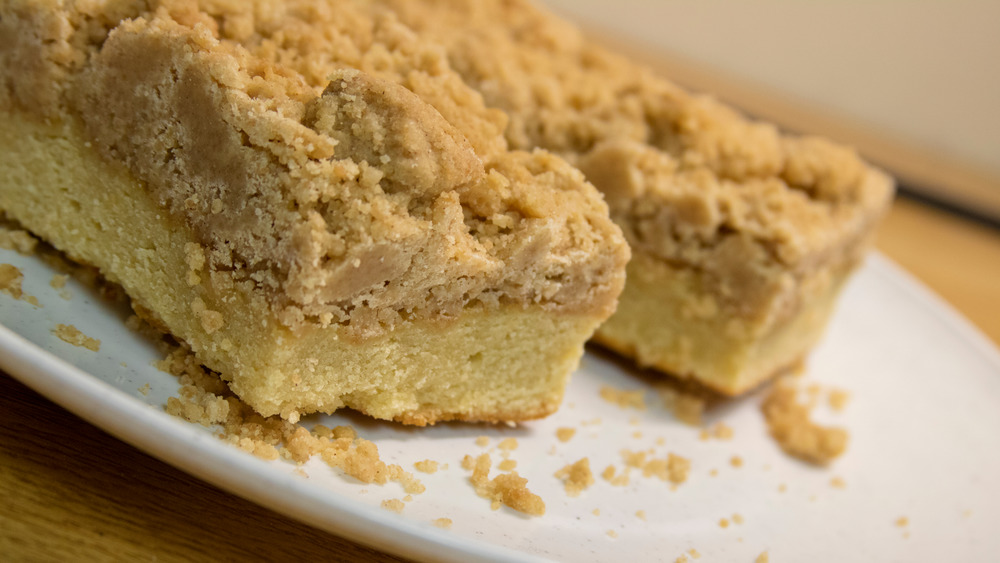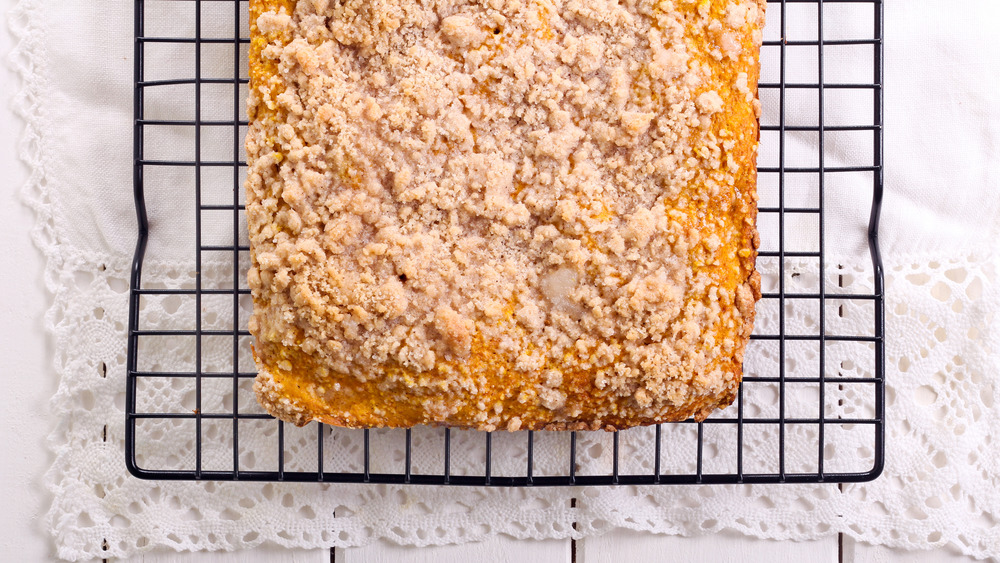The Real Difference Between Coffee Cake And Regular Cake
"Let them eat cake," Marie Antoinette once said. And eat cake we did. We eat cake on birthdays, we eat cake during the holidays, we eat cake at weddings — we even eat cake on a random Tuesday because we are "treating ourselves." Cakes make up almost a quarter of bakery sales in the U.S. and, in 2016 alone, Americans consumed over one billion cakes, according to a report by Webstaurant Store.
Of course, it should not come as a surprise that we eat a lot of cake. After all, not only is it absolutely delicious, but there are so many different types to choose from. Funfetti, red velvet, vanilla, chocolate, carrot, angel food — the list goes on and on. And that's not even taking into consideration all the different combinations of icing and toppings you can choose from. (Sprinkles! Frosting flowers! Fudge drizzle!) However, there is one type of cake that's markedly different from the rest: coffee cake. What makes it so unique? Here's what you need to know.
What's on top that sets coffee cake apart
Don't be fooled by the name — coffee cake is not unique because it contains coffee. In fact, many coffee cakes do not even feature coffee as one of their ingredients. (It only has that name because it's frequently enjoyed with a cup of coffee on the side.) What makes coffee cake different than regular cake is not what's on the inside, but what's on the outside. Or rather, what's on top.
Where regular cakes typically have frosting or glaze, coffee cake does not. Instead, it often has some type of crumb or streusel topping that is typically made with a combination of flour, sugar, butter, and cinnamon. Because coffee cake is not frosted, this also makes its preparation a lot easier, as it comes out of the oven with its topping already in place. You don't have to wait for it to cool or follow any additional steps. Just take it out and dig in!

